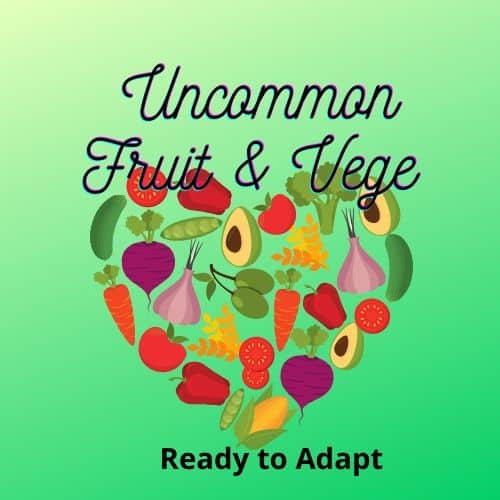Fascinating and Often Forgotten Fruit & Vegetables – How to Grow and Use Them

History
Like carrots, parsnips are native to Eurasia and have been eaten there since ancient times. History warns that there are some difficulties in distinguishing between parsnip and carrot (which, in Roman times, were white or purple) in classical writings since both vegetables seem to have been sometimes called Pastinaca, yet each vegetable appears to be well under cultivation in Roman times. The parsnip was much esteemed, and Roman Emperor Tiberius accepted part of the tribute payable to Rome by Germany in the form of parsnips. In Europe, the vegetable was used as a source of sugar before cane, and beet sugars were available. The common parsnip figures in the long list of edibles enjoyed by the Milanese as early as 1288.
In 1859, a new cultivar called ‘Student’ was developed by James Buckman at the Royal Agricultural College in England. He back-crossed cultivated plants to wild stock, aiming to demonstrate how native plants could be improved by selective breeding. This experiment was so successful, ‘Student’ became the major variety in cultivation in the late 19th century.
This plant was introduced to North America simultaneously by the French colonials in Canada and the British in the Thirteen Colonies for use as a root vegetable, but in the mid-19th century, it was replaced as the main source of starch by the potato and consequently was less widely cultivated.

The parsnip is a biennial vegetable with a fleshy, aromatic, white-yellow storage root. Though the seeds can be obtained in any organic seed store and the vegetable is well known in culinary circles, it is unfortunately no longer commonly known or used. It used to be very common in Europe. In fact, until the eighteenth-century parsnips were even more popular than carrots. The vegetable is not as crisp and delicate as carrots but it has both more bulk—a ripe root can weigh up to one pound—and more nutritional value.
Reported to have aphrodisiac qualities the humble parsnip was also used to relieve fever and stomach ailments, stimulate menstruation, and promote urination. Whether this is true we are not able to confirm but it certainly makes you think.
Growing Something Different
Like carrots, parsnips are cold hard biennials which produce umbels of yellow flowers in late summer, but like carrots they are mostly grown as an annual.
Parsnips succeed best in cool temperate areas. They should be planted in deep well drained soil, enriched with manure from a previous crop with the addition of some lime or dolomite. Fresh manure is bad for any root crop and causes forking of the root in parsnips and carrots.
Parsnip sed is thin and flat and quickly loses its vitality. Seeds are obtained from the two-year-old parsnip left to fallow in the ground for just this purpose. The two-year-old parsnip has a fibrous and unpleasant flavour and is unsuited to eating. So leave a couple in the ground to gain fresh seed and eat the rest. Seed older than 1 year seldom germinates well.
Seeds must be sown fresh each season and often take three weeks to germinate. To speed germination soad the seeds in water overnight before planting. Sow seeds early in spring, scattering thickly. Plant in rows 38 to 45 centimeters apart and thin out when they reach about five to seven centimeters tall. Allow 15 to 20 centimeters between plants when thinning.
A well known market gardener from England Richard Gardiner wrote in 1603 the earliest printed guide to gardening that he liked to plant his parsnips in rigoles or circles, thinning the seedlings to five centimeters apart.
To obtain smooth roots in harder ground use a dibbler or crowbar to make a deep hole, fill it with fine, rich soil and sow a few seeds on top. Thin to the strongest plant.
Feed plants occasionally with a weak diluted mixture of liquid manure or worm tea. Ensure you keep the weeds under control.
Roots are ready to lift the following winter and are better after a couple of frosts. They can be stored in the ground until you need them. Lift by digging around and under – do not pull.
There are many varieties to choose from but Hollow Crown has for the last 160 years been the best and most popular varitety in Australia. Roots are long, smooth and white both tender and sweet. In deep loose soil, they might reach 30 centimeters long or more and have a diameter up to ten centimeters. A slight depression in the crown gives this variety its name.
Improved Hollow Crown matures earlier than its common kind. The Student developed as recorded above in the mid ninetenth century , has clean smooth roots and a more subtle flavour than Hollow Crowns.
Guernsey, Large Guernsey, Jersey and Improved Half Long are a standard variety more than 100 years old. Roots are larger at the top and might 90 centimeters to one metre in length, but still have good quality and flavour. Use when boiled as feed for cattle or chickens. Siam is a rare variety from Thailand which has a small yellowish root with a tender rich flavour.
Get Your Taste Buds Ready
Maestro Martino da Como had a recipe for deep-fried parsnips in his “Libro de arte coquinaria” (“Book of the Art of Cookery”) written in 1450, which shows that parsnips did have some culinary presence in the Renaissance period.
Here’s a simple traditional 17th Century parsnip recipe that you might be interested in trying out at home:
If last spring’s foresight has already won you a parsnip crop, try this 17th-century recipe from Sir Kenelm Digby for a simple parsnip pudding. Grate the parsnips and stew the result in milk, adding more milk from time to time “till it hath drunk in a good quantity of the Milk, and is well swelled with it, and will take in no more.”
Eat the parsnips, Digby urges, “without Sugar or Butter, for they will have a natural sweetness that is beyond Sugar, and will be Unctuous so as not to need Butter.” He was right about the sugar, but a knob of butter would be beyond sublime.
Washington Post
During the times of knights and minnesingers, the parsnip was a most popular vegetable. One particularly intriguing medieval recipe calls for sautéing and baking parsnips with almonds, chestnuts, raisins, nutmeg, and expensive spices. Their distinct flavor goes very well with roast venison, mutton, or beef. But parsnips were just as popular in the humble kitchens of the simple folk as they were in the cuisine of the aristocracy. Before potatoes replaced them, parsnips were an important filling and nourishing ingredient to stews and soups, as the root contains a lot of sugar, starch, and fatty oils. Even into the nineteenth-century milk with parsnips was given to help those with consumption—those experiencing the continual depletion, emaciation, loss of strength, and appetite of the then-fatal disease tuberculosis.

But there are many ways to enjoy parsnips. The image above shows how most are used to seeing parsnip outside of stews and casseroles. Roasted medley of vegetables is simply wonderful with roast meats and the like but what about some of these ideas.
Chips made with parsnips are a simple extension of the roasted idea but they can be made into french fries as well as crisps.

Garlic and Tumeric Loaded Parsnip Fries
Jamie Oliver stepped up the reputation of the humble parsnip with his recipe for Parsnip and Chestnut Tarte Tatin. Sounds devine.

Or what about this gem from my Indian friend – Harissa and Parsnip Dip.

Or this little gem from Curious Cuisiniere Yummy Irish Parsnip Soup.

I think we can all agree there is plenty of variability and variety to be had with parsnips. The only question remaining is will you be planting it this spring?


